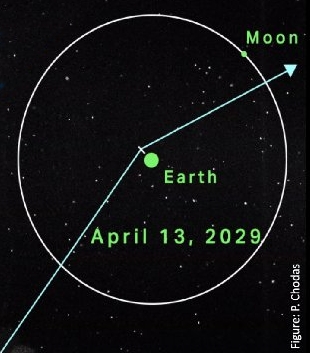Congressional budget action appears to just save two of seventeen on-going NASA missions
Though no final budget has yet been approved, based on the language in the budget the House has approved and sent to the Senate, only two of the seventeen on-going missions presently in space are specifically allocated money, thus allowing the Trump administration to zero out funding for the remaining fifteen.
The two missions saved are Osiris-Apex, on its way to the potentially dangerous asteroid Apophis, and the Magnetospheric Multiscale Mission (MMS), four satellites in orbit that observe the Earth’s magnetosphere.
The article at the link is typical of our propaganda press. It clearly opposes any cuts to NASA, and lobbies repeatedly for all funding to be reinstated. This pattern has gotten quite boring and tedious. It would be so refreshing to see a more objective take, at least one in a while.
However, its reporting confirms my own reporting from mid-September, where I noted that the vague language in the House budget bill would allow Trump to cut these missions. Congress wants to preen itself as supporting all funding for NASA, while carefully allowing Trump to go ahead with large cuts.
It is a good thing these two missions have been saved, though it does appear their funding has been trimmed. Of the fifteen missions in limbo, the only two that seem worth keeping is the Chandra X-Ray Observatory and New Horizons, though the second should likely be set up similar to the two Voyager spacecraft, with a very small crew aimed mainly at keeping the spacecraft functioning and able to send back data periodically.
We are in great debt. It is time that the federal government make some real choices. We can no longer afford to buy all the candy in the store.
Though no final budget has yet been approved, based on the language in the budget the House has approved and sent to the Senate, only two of the seventeen on-going missions presently in space are specifically allocated money, thus allowing the Trump administration to zero out funding for the remaining fifteen.
The two missions saved are Osiris-Apex, on its way to the potentially dangerous asteroid Apophis, and the Magnetospheric Multiscale Mission (MMS), four satellites in orbit that observe the Earth’s magnetosphere.
The article at the link is typical of our propaganda press. It clearly opposes any cuts to NASA, and lobbies repeatedly for all funding to be reinstated. This pattern has gotten quite boring and tedious. It would be so refreshing to see a more objective take, at least one in a while.
However, its reporting confirms my own reporting from mid-September, where I noted that the vague language in the House budget bill would allow Trump to cut these missions. Congress wants to preen itself as supporting all funding for NASA, while carefully allowing Trump to go ahead with large cuts.
It is a good thing these two missions have been saved, though it does appear their funding has been trimmed. Of the fifteen missions in limbo, the only two that seem worth keeping is the Chandra X-Ray Observatory and New Horizons, though the second should likely be set up similar to the two Voyager spacecraft, with a very small crew aimed mainly at keeping the spacecraft functioning and able to send back data periodically.
We are in great debt. It is time that the federal government make some real choices. We can no longer afford to buy all the candy in the store.

